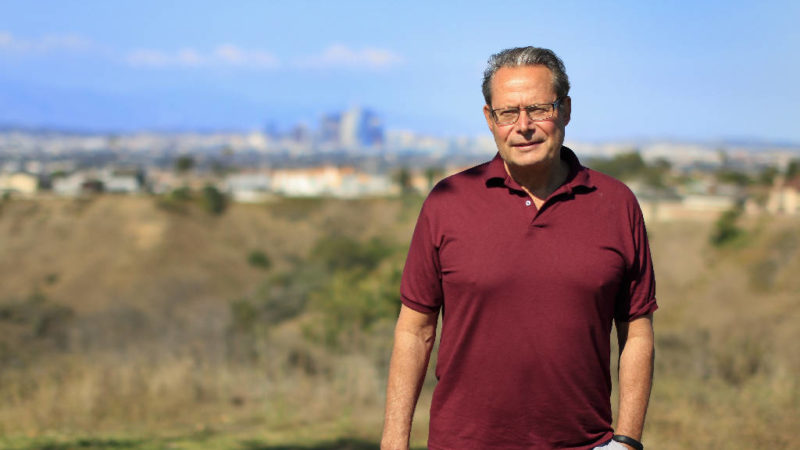
A conservation scientist at home in a megacity
Editor’s Note: As chief scientist of The Nature Conservancy, the world’s largest environmental organization, Peter Kareiva has spent most of the past decade in the air, touching down to work with other scientists, conservationists, community organizations, political and business leaders on projects to protect nature—for nature’s sake and for people—on every continent except Antarctica. Now he’s coming to roost in what might seem an unlikely perch: Los Angeles, a city not known as a paragon of preservation. This summer, Kareiva became director of the Institute of the Environment and Sustainability at UCLA. Los Angeles is changing, Kareiva told us. And cities are a crucial site for conservation science and solutions to the grand challenges of the twenty-first century: population growth and urbanization, threats to ecosystems and biodiversity, climate change, and sustainability in a world of inequality. What better place could there be for a scientist who has been called “one of the most innovative and provocative thinkers in conservation today”? We sat down for a long conversation with him on a sunny day with a light ocean breeze blowing across the City of Angels. This interview was conducted by Jon Christensen and Hillary Rosner and edited by Jon Christensen. It will appear in the fall issue of Boom: A Journal of California.
Boom: Welcome to Los Angeles.
Kareiva: It’s nice to be here.
Boom: With The Nature Conservancy, you’ve been all over the world. What attracts you to L.A.?
Kareiva: Well, you know, I lived in L.A. 20 years ago. And at that stage, I was surfing and enjoying the weather. This time around, it’s that I like cities! I know that’s kind of unusual for a conservation biologist. But I’ve always liked cities. And L.A. is a great city.
I like cities because of the creativity and the people in them. And now I like cities as a conservationist because I think they’re essential to get right in order to solve the big environmental problems—food, water, climate, transportation, all the supply chains that drive what happens in the world. Getting that right all depends on cities because that’s where most of the activity is, the energy is, the people are.
L.A. is a pretty neat city because I like to run against the grain a little bit. And when I tell my buddies I’m going to L.A., they all say, “Why L.A.?” Most conservation biologists would go to Montana or go to Wyoming.
Well, first of all, L.A. is doing a lot of interesting things with conservation. The whole notion of restoring the L.A. River is just wild. L.A. was a leader in dealing with coastal pollution decades ago. And now L.A. is facing a big water shortage, and how it is dealing with that, in everything from residential to industrial use is fascinating. The energetics of the city—just in terms of carbon emissions are daunting. You have a sprawling city, notorious for not having mass transit, that could actually turn out to be carbon-neutral. That would be remarkable. And that would tell you that other cities could do it too, that you wouldn’t have to start with a perfectly designed city. So all of that’s pretty appealing. And then there is diversity. Why do biologists do conservation? They like biological diversity. I like people diversity. I like food diversity. And L.A. has got all that.
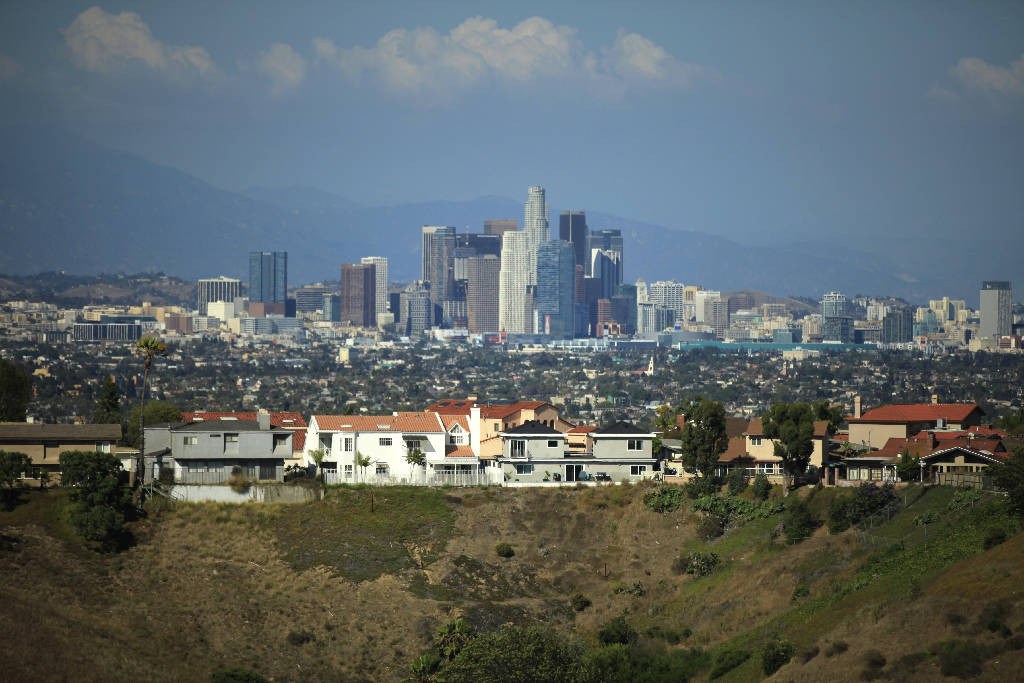
Boom: So you’re making a move from where you’ve been for 10 years now, The Nature Conservancy, the world’s largest conservation organization, and doing all these great, exciting projects on the ground, around the world. Why make the transition to academia, to UCLA?
Kareiva: Well, I’m still going to stay connected to The Nature Conservancy in some ways, precisely for what you just said, because they’re always doing stuff. But there is a problem with organizations that are always doing stuff, whether NGOs or the federal government. They’re called action institutions. And action institutions do not pause to think about what they’re doing. They do not pause to ask, really, how well is this working? Is there a better way or is there a different way to do things? Rarely do they even pause to analyze the data they’ve collected. And so after 10 years at The Nature Conservancy doing stuff, I think there now needs to be some research and real deep analysis of what’s working and not working and all the things they and everybody else are doing in the environment.
And the other thing is that, you know, universities are places where, ideally, it’s fine to have arguments. It’s not always so fine to have arguments in the NGO world or even the federal agency world because there’s a tremendous cultural push to reaching consensus, sometimes reaching consensus somewhat artificially, but not resolving the issues. And it’s understandable that federal agencies have to achieve consensus. It’s understandable that NGOs have to reach consensus. But I think that we’re at a time now in the environment where we don’t know what the consensus should be, and we should be having these arguments.
Boom: You’ve also taught at universities around the United States, public and private. What attracts you to a big public university?
Kareiva: Well, my very first job after I did my Ph.D. was at Brown University, which is about as elite as you can get. My dad was first a coal miner and then a construction worker and finally a groundskeeper at a college, and so I had a little bit of a working-class chip on my shoulder. And then I remember when I moved from Brown to the University of Washington, just looking out at the students and seeing lumberjacks, and just a tremendous diversity of students, and really liking it. There’s something about the big public university that’s special. They really are the American dream. Somebody told me the statistic that one out of three UCLA undergraduates are first generation college students, and you see it, just from the little time I’ve been on campus. Just looking around and talking to people, you see that diversity. They’re much less entitled. They’re much less cynical.
So I think there’s something special about public universities. But also, many who have been at a university realize that public universities are in trouble in the United States. The state and the public are cutting back support for them. They’re asking faculty to do more with less. Students are being asked to pay higher tuition. And it’s really kind of cramped from every side. Private philanthropy gives to the big famous private schools. They really should be giving to UCLA and the other public schools, in my opinion. I just love big public schools. They’re exciting.
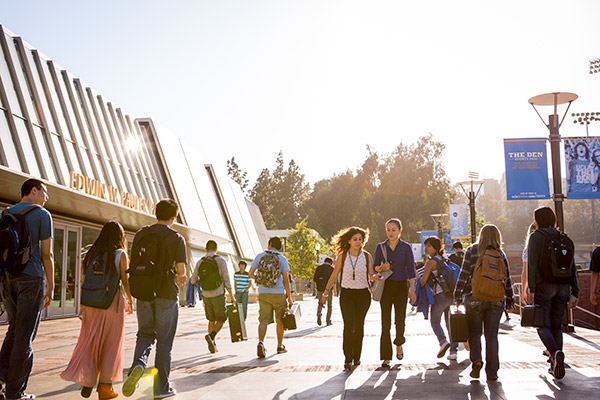
Boom: So you like a challenge.
Kareiva: I always like a challenge.
Kareiva: I’m competitive too. I think that major public universities like UCLA, UC Berkeley, the University of Washington, the University of Minnesota, those big schools actually can do better research and do things better than—I won’t name the schools, but you can name them—all the elite private schools, partly because they are more diverse. There’s more hunger.
Boom: And energy.
Kareiva: Yes, and energy.
Boom: You said after 10 years, now seems like a time to step back and assess what’s being done and perhaps argue with the consensus. So do you have a specific research agenda based on that, that either you want to see carried out or you plan to carry out yourself?
Kareiva: Yeah, I do, and it’s been evolving pretty rapidly, even within the last year. So if you had asked me a year ago, it would be different than what it is now, partly because of analyzing data and thinking about things.
Probably the trendiest thing in conservation and the environment right now is urban conservation, green infrastructure, resilient cities, all of those are kind of connected in ways. But they’re connected pretty uncritically right now. And I think the way people are dealing with it, because they’re natural scientists like me, they’re coming in, and they’re doing it almost from a too mechanistic, biophysical point of view. Like let’s put, you know, this much permeable surface, this much of this building type, this much green roof, this much of that, and then let’s write out a model that tells you what the city is like environmentally. And that’s all valid.
I would do that myself. But because I travel so much and I’m a walker, whenever I go to a new city, I’ll spend a whole day walking around the city. And you get different views. You see how people are different. But I don’t think any of that type of research captures that. It doesn’t capture what makes people really enjoy the city and the nature of the city, what makes people really connect with nature and feel different about the city. I don’t think it’s well captured by the way we’ve traditionally been doing this research on cities.
This research is also tied to the notion of resilience. There are a number of major philanthropists funding what they call the resilient cities network. And we all have an intuitive idea what resilience means. It means bouncing back when something like Hurricane Sandy happens, or not getting hammered when something bad happens to you. When I see conservation and environmentalists take up the phrase “resilience,” often their interpretation of it is keeping nature the same, and they think that maintence of the same nature produces resilience for resilient cities. The hypothesis is often that if we maintain the biodiversity we have, if we maintain the vegetation we have without any non-native species, and if we maintain natures as it has been, then we will get resilience. Well that might be resilient for nature, but I am not sure it is resilience for cities and people.
“I like cities as a conservationist because they’re essential to get right in order to solve the big environmental problems—food, water, climate, transportation, all the supply chains that drive what happens in the world.”
There’s good reason to argue that what would make a city socially and economically resilient is to fundamentally transform nature, not keep it the same. In fact, spending energy trying to keep it the same could just waste energy, and it could be the worst thing in the world you could do. So I’m interested in exploring that idea of resilience, not just with cities, but in a variety of systems that are taking up this word “resilience.” I’m interested in trying to collect data and write mathematical models, frankly, and conceptual models that ask the question “What type of nature would make socioeconomic systems resilient?” The default answer of ecologists has been that nature has to stay the same to be resilient. But that might not be the case at all.
And then one other big thing that I’ve really become interested in is working with corporations to create environmental benefits. Related to that, what’s the role of consumer and investor behavior in prompting changes in corporate practices? There’s no question that corporations will not just automatically decide to become environmentally wonderful for the sake of “goodness. But there have been cases where corporate practices have changed dramatically. Look at dolphin-safe tuna. We used to kill millions of dolphins a year. Now we kill less than a thousand a year. That involved totally revamping an industry. And it was an industry that resisted for a while because it made it more expensive and harder to catch tuna. They had to change their gear and everything. They totally changed.
And technology has a role in this. A lot of corporations, when you come to them, they say, “Well, we can’t give you the information you want.” I think in this big data era they can. Also, most corporations, when they do sustainability, all they’re really doing is energy efficiency—and now maybe water efficiency. Sustainability is about a lot more than energy efficiency and water efficiency. But those are easy to report and tend to be where corporations stop in their sustainability efforts.
The best case is from food safety and tracking E. coli outbreaks. There was an outbreak that originated here in California from lettuce grown in Salinas. There are ways of tracking supply chains that allow you to really know where your food is coming from and how it was grown. Well, that same technology allows you to do that for any product, much better than corporations are actually using.
Nike is the best at it. Nike got very serious. You can go on Nike’s website and look at their MSI, or Materials Sustainability Index, and find out what material is in your running shoe and where it came from and how sustainable it is. And if you put that information together for all of a corporation’s products, you can actually really get what I would call the sustainability footprint and impact of corporations.
So, I’m interested in thinking through the whole business enterprise from a supply chain point of view and seeing what could be done with it. I think you have a lot of leverage there. And a lot could be done. We make it too easy by being satisfied with emissions reporting as though that captures all of sustainability.
Boom: Both of these things—focusing on what nature can do for people or for cities and your interest in working with corporations—have gotten you into some trouble with the traditional conservation community. And some of the debates you’ve been involved in have gotten very heated and personal at times. And I wonder if there are other things that you’ve learned that have changed your approach.
Kareiva: Well, the two immediate, short-term, personal things that I’ve learned are, one, to be a lot better at listening and paying attention to other people’s values. The other thing I’ve learned is to open every paper and every talk with some sort of statement that says, “Hey, look, I love nature too. I go out. I like species. I don’t want to see them extinct.” And then move on from there. It’s sort of like announcing “I believe in God too,” or, “I’m a patriot as well. I believe in the United States.”
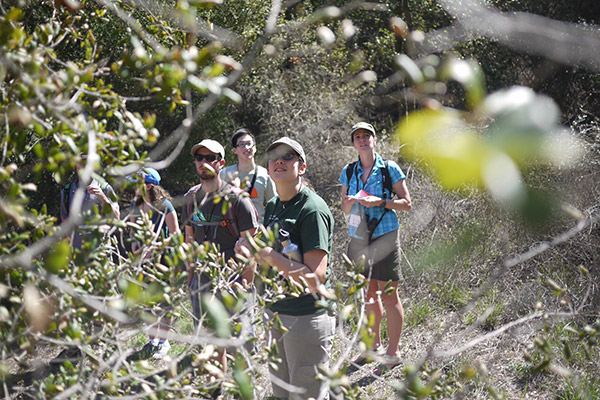
Boom: “I believe in nature.”
Kareiva: Right.
Boom: But wait, you’ve been the chief scientist for The Nature Conservancy. What made some people think you don’t care enough about nature?
Kareiva: By paying so much attention to what nature can do for cities and people or corporate behavior, there’s sometimes the assumption that means that I don’t love nature as a value. And that by not loving nature just as a pure value, as an ethical value, I’ve surrendered too much and made it too easy to compromise and not produce the outcomes that conservationists want. Where I come back on that is, well, what you have to realize is that nature is one of many values. And there certainly is an ethics to extinction. But there’s also an ethics to freedom from violence. There’s also an ethics to freedom from hunger. There are all these values and ethics. And so love of nature is one of many values that shape our decisions. And you can’t just make it automatically the trump card, because if you do that, it means you’re not going to listen to anybody else or even have a conversation with anybody else. It ends all conversations to tell someone that nature is the highest value that trumps all other values. I am not willing to say that nature should trump all other values. And that unwillingness makes some conservationists squirm and think I am uncommitted.
But the other thing is—and this is what I think I did wrong and scientists often do wrong—is that there are a lot of debates about conservation and the environment that really are all about values, and we couch them in science. And I should have known better. Now that I reflect on a whole bunch of debates that I’ve been involved in, they were really consistently about values. What does one part of society value versus another part of society? And science was used to create an answer to support a preference that had already been arrived at by values. And I should have been smarter about that.
Now the way I like to reframe it is this. I know it sounds like it’s, you know, kind of a smiley face answer. But I say everybody is an environmentalist. And to a certain extent, everybody is an environmentalist. You’d find very few people who would say “I don’t like the environment. I don’t like nature.” So everybody is an environmentalist. And the right way to ask the questions, we face—in L.A., in national parks, with endangered species, the whole environmental movement and conservation movement—is “What do we want the world to look like in 2030 and 2050?” If we actually frame the question that way, “What do we want the world to look like in 2030 and 2050?” I think we’d find a lot more common ground, because it’s looking forward. Almost everybody loves running streams and rivers with fish in them that their kids can play along, and everybody loves the coastline, and everybody would love the opportunity to go to a place like Yellowstone.
So let’s ask “What do you want the world to look like in 2030 and 2050?” Start with that and then ask, “Okay. How might that happen?” Instead, if you look environmental debates, it’s all about what do we do tomorrow? What do we do tomorrow about building this road or about this corporate activity or about this housing development or about this invasive species or about this threatened and endangered species? And by making it so proximate, you lose sight of the common ground that people have. People might differ about what they do tomorrow because they’re worried about jobs lost or not lost. But in fact, looking to 2030 and 2050, they have a lot more common ground. Let’s paint a picture. To make it real, you have to pick real dates. And it would either be 2030 or 2050 because that’s where all the models and projections go when you’re starting with science. So you pick one of those two dates. I’m inclined to do 2030 because that’s not too far off. And then just start from there.
I think it would be an interesting exercise—something we could do at UCLA is to do some of that visioning. But it has to be based on science. It can’t be fantasy. You have to do some hard calculations and say, “Well, would there still be enough land to feed people, and where are you getting your energy from? And how much?” You know, it’s not just science fiction. It’s got to be grounded, with real constraints.
Boom: OK, so everybody wants to go to Yosemite at some point in their lives. And everybody wants clean air and clean water. And everybody wants a world without runaway global warming. But there are still going to be big debates about what we need to do to get there. So how do we go from debating about what we’ll do or not do today or tomorrow to debating about how to get to a better 2030 or 2050?
Kareiva: People don’t see a path to getting there. And there has to be path laid out to getting to that future world. And that path has to go all the way there, not just be about what you don’t do tomorrow. Do you know what I’m saying?
“Everybody is an environmentalist. And the right way to ask the questions we face—in L.A., in national parks, with endangered species, the whole environmental movement and conservation movement—is ‘What do we want the world to look like in 2030 and 2050?’ If we actually frame the question that way, I think we’d find a lot more common ground, because it’s looking forward.”
I’m trained as a mathematician. There’s a classical form of mathematical problem solving called “dynamic programming.” In dynamic programming, you work backwards. You end up at the final solution. But you step backwards to get it, so you got to know how you get there. It’s a very deep mathematical insight. And it’s used all the time to solve complicated problems.
And it’s actually not such a bad idea when you think about it for environmental things. Start with where you want to be and work backwards. Because what we learn from dynamic programming is you can’t do it the other way around. You actually can’t come up with a solution going from the starting point and getting to that desired outcome. You’ve got to start with the endpoint and work backwards. And I think that’s really true. If you don’t see a path there, why would you say, for instance, “I’m going to bear this burden of an increased property tax? All it’s going to do is get me is protect a few hills in San Diego for a few species.” You’ve got to see a path the whole way, to conserving an ecosystem that’s crucial for the future of the place you live.
When you do this future visioning, I think where you’d see the real difference is in what type of nature people imagine in those futures. Are non-native species okay? Non-native species are out there. Are they okay as far as your joyous nature? Eucalyptus is a non-native species. So are we going to try to eliminate eucalyptus from California, or are we just going to accept that eucalyptus is actually part of what most people think is California because you smell it? And it will be that way with a number of non-native species.
Is it okay to have some engineering mixed in? Look at Kruger National Park where in various places, you see wells that were drilled to provide water for wildlife. Is that okay? Clearly, it is for those people who go to Africa to see wildlife.
Boom: So when you’re teaching environmental science students in the Institute of the Environment and Sustainability at UCLA, what else do you teach them that scientists need to know and need to be able to do to make their work really effective and have impact in the world?
Kareiva: We need to think about how we might use social media to change behavior. We need social scientists, cognitive psychologists, economists are obvious. There’s no question that environmentalists need all that, and, I would say, we also need the humanities. The humanities are a way to learn how to tell a story that inspires and makes people thoughtful or that enables your story about GMOs or your story about climate change to relate to their family history and their work. Humanities can also teach you empathy, which can so often be lacking in heated environmental debates.
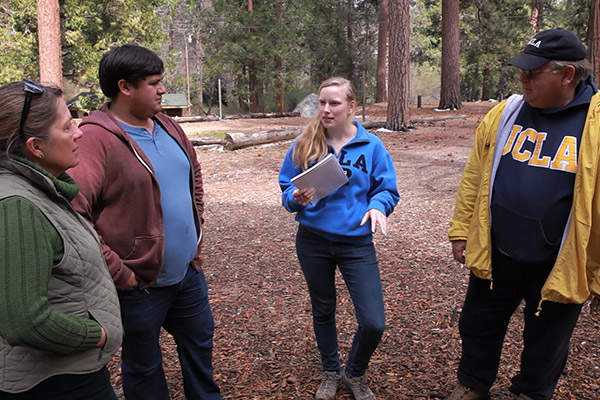
Boom: These are questions about values as well as the stories that we tell. And science can clearly tell us what the problems are. But then there’s this huge arena of values and people making judgments about those problems. So if science can tell us what the problems are should scientists then just step aside and let the social sciences, humanities, and politics deal with the rest? Or is there some role for science beyond just illuminating the problems and pointing to potential solutions?
Kareiva: Well, science can tell you the problems. It also can tell you the constraints and tradeoffs, which allows you to play out your scenarios in the future. For example, if you’re considering whether we should ranch or farm tuna offshore in California, as opposed to relying on catching wild tuna, science can tell us what’s the maximum energy efficiency by which you can convert food into tuna and what the yield will be, so that we’ll be able to make better decisions. Science doesn’t just tell you what the problems are. It tells you what constraints limit your solutions. It can also tell you rates. Rates are really important. And it can also tell you what variability and potential surprises to expect. It never gives you prescriptive answers. And scientists sometimes will make mistakes, of course, in thinking it does.
Boom: But is there a role for, maybe it’s not for science, but for scientists to be active in public and advocating for solutions. Or do you step back and say, “Here is what the science shows. Here are your options. Now you decide.”?
Kareiva: I think there’s a public role for the scientist, although in my profession, there’s divided opinion on that. So many scientists would say that once you become engaged in that public debate, you have reduced your credibility as a scientist. I would say maybe even half of scientists today still think that—maybe even more. I think otherwise. And I think the way you have to guard against that is what you publish. It is kind of arcane, but what you publish in peer-reviewed literature has to maintain high quality and not be biased and be pretty, pretty clear. And that’s not always the case for scientists who become activists. Some clearly fish for data and try to get results a certain way.
But you can have a public persona where you mix the two. You can say, “Based on my expertise, my values, and all this, this is what I think,” or, “This is the conversation we should be having.” I think we have to step up, because if we don’t, who is going to do it? Who else is going to take the science and bring it into the realm of values, other than scientists?
Boom: Writers, artists?
Kareiva: Well, they can. You’re right. I agree. But they’d be better off if they have scientists to talk to, as friends and colleagues and collaborators.
Boom: For sure.
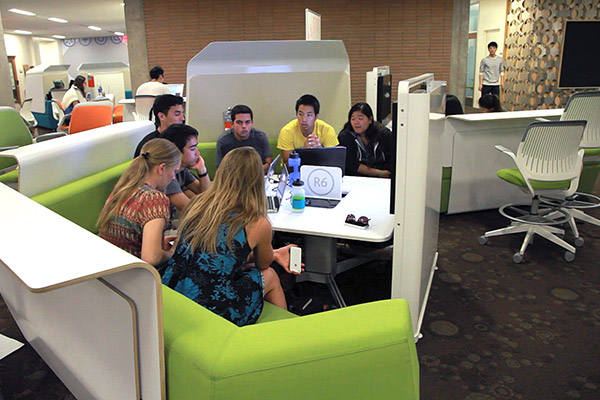
Kareiva: Just like when I started out in biology and I went into mathematical biology, I had mathematicians to talk to, and they didn’t talk to me in just math. They talked to me in other ways.
I think we have to step up. But there are a lot of people on campuses around the United States who would sit there and say, “Oh, that’s not really science.”
Boom: Why do you think that is?
Kareiva: You know, people basically say, “Be like me.” “And if you’re different than me, you’re not good. That’s all there is.”
I don’t think everybody has to be engaged publicly. It’s just like everybody shouldn’t teach. Not all scientists should be out in the public. They‘ll just do more damage. They might be so obnoxious, they would just turn the public off to science. But a significant number of scientists have to be, and they shouldn’t be shunned or scorned because they are. And people who are out in public shouldn’t shun or scorn the ones who don’t go out in public.
Boom: Is there anything special about California in terms of in the world of conservation and in conservation science?
Kareiva: You know, there is, in a way. All biologists recognize it because of the many different habitats in California from the deserts to the mountains and ocean. It’s a really special place biologically and biodiversity-wise. Then you have the fact that California is also a huge economic engine – the eighth largest economy in the world. Just the state of California. It’s a huge source of economic growth and wealth. And it has a culture of innovation. Whether that’s just a made-up story or fairy tale, it doesn’t matter. It gives a mindset or a feeling that we can innovate our way out of things, that whole Silicon Valley thing, but it extends through the state.
So you have a biodiversity conservation hotspot. You have wealth and innovation coupled together, so it’s not wealth like based on selling oil, which would not have innovation associated with it. And then you have population diversity, in a diverse state where soon Hispanics will be the majority.
What makes that special is that with the cultural diversity and the wealth there are the means to try experiments in conservation and environment, to do things differently, be bold. The traditional John Muir-type conservation is not necessarily part of a cultural heritage of the Hispanic family. So I think these things all come together so that California can try some pretty bold things. Look at Jerry Brown’s push for carbon emissions limits and renewable energy. Look at The Nature Conservancy’s efforts to buy back and refit trawlers. And by doing that, have created a private market solution so that fishermen ended up making more money.
The Nature Conservancy in California has also created auctions around agricultural lands that can be flooded for bird habitat, so that instead of regulating who gets flooded, you have the farmers saying “We think we’ve got land here that would be a stopover for a thousand birds, and we’ll flood our lands longer. So we’ll plan. And if we get those thousand birds, then you pay us this much money.” That’s pretty clever.
So I think the mixture of the enormous biological diversity and the wealth—it’s a lot harder to have environmental solutions when there are no resources, no affluence—enables California to come up with these things. And then just the diverse population.
We could talk about so many things. I’ll bet if you just went down the list of environmental problems—water. So there’s a lot going on in California with desalination experiments. The only other place that’s doing as much is Israel. Energy. There’s a lot going on in California with respect to energy. Just go down the list, and you will find a lot more experimentation in California than other places. They’ll do some stupid stuff, and they’ll get it wrong. But it’s that experimentation that’s pretty cool.
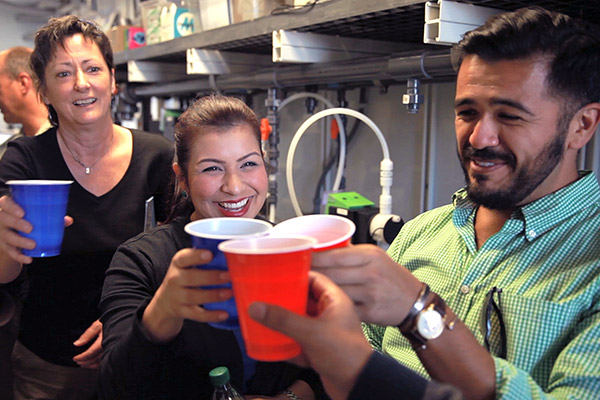
Boom: The one thing you haven’t mentioned, of course, is our great creative industry that gives us so many dystopias. You do realize you’re moving to the capital of dystopia?
Kareiva: Oh, yes. The film industry. I’ve seen Blade Runner many a time.
So a lot of people have said that if you really wanted to get people to pay attention to climate change and water and all these other things, wouldn’t the film industry be a big help? Look at gay marriage. It wasn’t the film industry. It was television. But there’s no question, most people think that television shows had a lot to do with how rapid the transition was to supporting gay marriage. So you would think that the film industry could do more with the environment. It’s made efforts.
I’d like to look at films as experiments and try different types of films and get a sense of how they resonated with the culture to whether or not they changed things. And maybe we can’t do it as an experiment. But maybe we could think of them as natural experiments and try to take advantage of it, because that media makes a difference.
Boom: What are you most looking forward to about living and working here in L.A.?
Kareiva: You know what I’m most looking forward to is this: I’ve always collaborated with people. I don’t think I’ve done anything by myself since my Ph.D. thesis. And there’s a whole set of people here that I want to do joint research projects with in a deep way, not in a superficial way. And I can hardly wait to get started. I just think that there are so many cool research projects I can do, collaboratively, with people.
And then a second thing is I like the Institute of the Environment and Sustainability. I like the vision of it. I always just feel like it just doesn’t tell its story that well. People don’t realize how good it is. And people don’t realize some of the neat stories that are going on at the Institute. At The Nature Conservancy, we learned the power of storytelling for raising money and to be more effective at getting policy change. So those are the two things. Somehow making what’s really good better known by telling our story better, and at a sort of selfish personal level of collaboration with great people.
